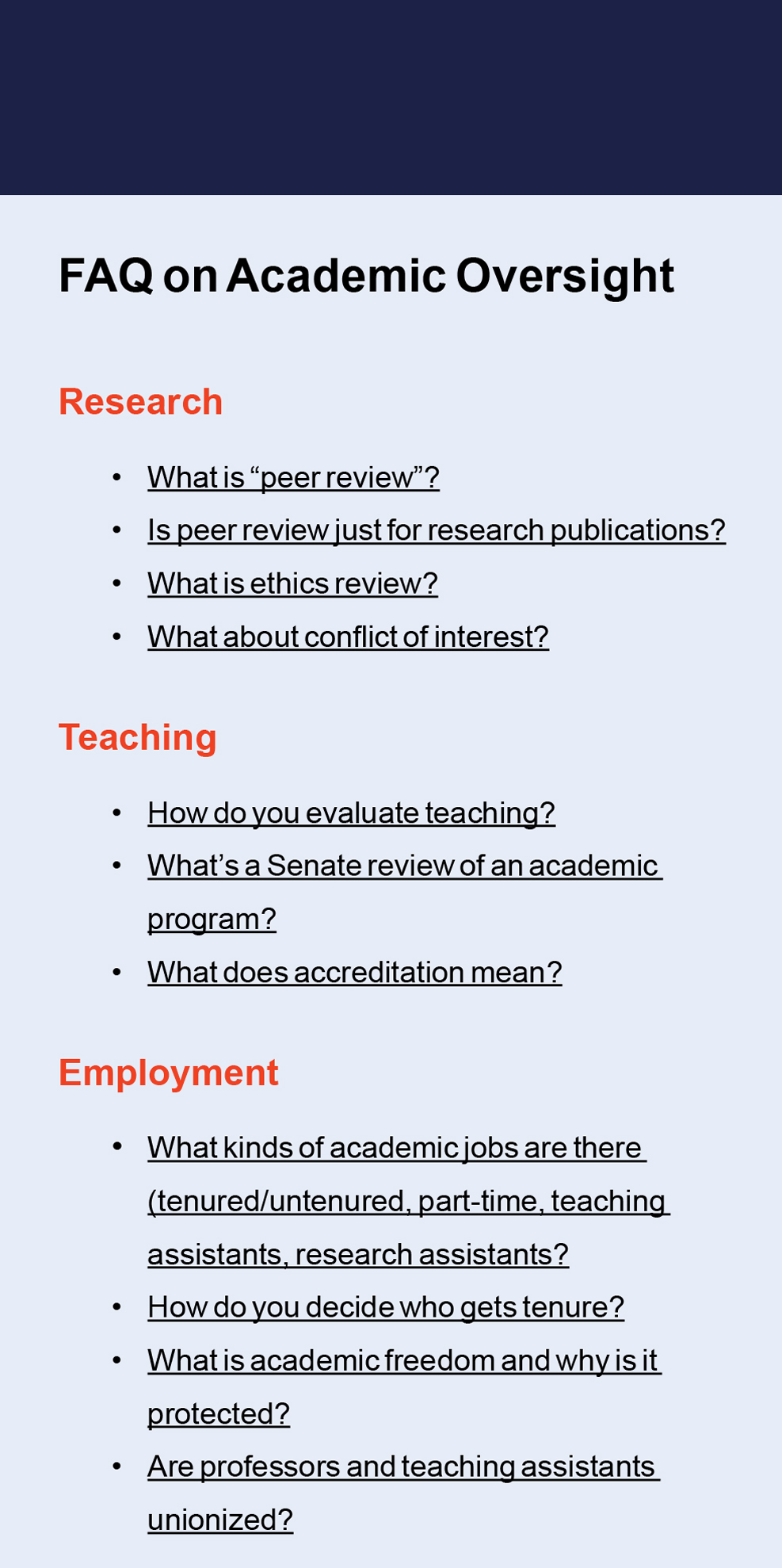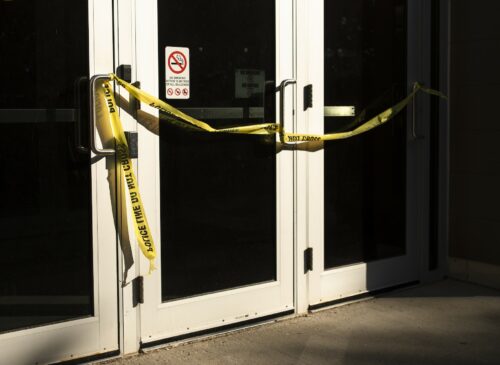Academics are encouraged to share their research with the public, but amid reports of harassment of experts online, the rules of engagement are murky. How can scholars protect themselves and what recourse do they have when things go wrong?

The openness of the digital environment makes online engagement attractive because it is a relatively cheap and easy way for scholars to extend the reach of their research. But this openness also creates new vulnerabilities for scholars. It’s time for the research community to look carefully at this landscape and take steps to support safe, effective, and meaningful public engagement.
In “Protecting Expert Advice for the Public,” our peer-reviewed Royal Society of Canada policy briefing, co-authored with our colleagues Wendy Chun and Matthew Herder, we tackle the escalating problem of the harassment of researchers as a consequence of online and public knowledge mobilization. We recommend that the agencies and institutions responsible for research in Canada think urgently about how to ensure safe and effective public communication of scholarship; we argue for policies to support those in extreme situations, particularly scholars threatened with violence. Our recommendations are in stark contrast to the widespread laissez-faire attitude in which such communication is assumed to just happen—a view that presumes the costs suffered by researchers wading into public debate is simply unavoidable or inconsequential.
What do researchers face now?
Academic institutions have been too slow in adapting to new realities, risks, and consequences of the digital transformation of academic work. Postsecondary institutions are still carved up into bureaucratic silos largely inherited from the days when they were only bricks-and-mortar. Now, academics and other researchers work in both physical and digital spaces, from learning management systems to videoconferencing to e-mails, websites, social media, and electronic publications.
Academic institutions have been too slow in adapting to new realities, risks, and consequences of the digital transformation of academic work.
This opens up enormous possibilities for enhancing accessibility and broadens the audiences who engage with research, but it also means that toxic activity can easily spread from social media to e-mail, and leap into the physical world. For instance, doxxing (in which contact information, such as a home address or phone number, is posted online) often leads to offline harassment (such as so-called “SLAPP” lawsuits aiming to unjustifiably censor researchers, phone calls to an employer, or contact at a scholar’s home or office). These targeted attacks are not evenly distributed. Online harassment particularly affects people of colour, members of the LGBTQ+ community, women, and other traditionally marginalized populations. It also disproportionately affects scholars in fields and disciplines that intersect with polarizing public discourses, from climate change and vaccination to equity, diversity, and inclusion itself.
The safe and effective communication of research results and expertise is not a fringe issue. It speaks, fundamentally, to workplace safety in the digital age and to the public role of our postsecondary institutions. Our brief encourages administrators, faculty members, and research offices to evaluate how they incentivize and support public knowledge sharing. This must include a careful assessment of the risks that are attached to public-facing work and action to mitigate them. There is no one-size-fits-all solution here because postsecondary institutions are variously shaped by legislation, collective agreements, academic norms, and institutional histories. It is imperative, however, that institutions move beyond their bureaucratic silos to collaborate and coordinate solutions that are as fluid and flexible as the digital space requires.
Effective support for research communications
Done well, sharing research beyond books and paywalled academic journals, academic conferences, and colloquia can produce a range of welcome outcomes. Publicly focused research communication can enrich public discourse, nurture lifelong learning and curiosity, support the work of decision-makers in government, civil society organizations, and industry, and tackle mis- and dis-information. It can also provide opportunities for scholars to engage with viewpoints and approaches outside the so-called “ivory tower.”
Funding bodies, governments, postsecondary institutions, and even faculty involved in hiring and promotions processes now reward scholars for sharing their research with the public at large. Yet we lack even a single term for it. “Knowledge mobilization,” “knowledge dissemination,” “knowledge translation,” “knowledge transfer,” and “outreach” are all loosely interchangeable. More importantly, one of the pernicious elements of “knowledge mobilization” discourse is the uncritical opposition between “researchers” and “the public.” The researcher/public binary reinforces the perception of elitism that can impede multilateral and respectful conversations.
Such oversimplifications of researcher and public relationships are a symptom of the lack of open, thoughtful, and critical conversations that would help concretely define the specific objectives of sharing research knowledge in Canada and best practices for achieving it. A more nuanced approach would recognize that researchers are part of the public and belong to non-academic communities, from neighbourhoods to Facebook groups.
We recommend that postsecondary institutions reflect on their existing frameworks by asking a series of critical and reflexive questions to address these problems. What have researchers learned over the last two decades about strategies that work and strategies that fail? How much time and what supports do different strategies require? Doing so will produce a more robust, concrete, and nuanced framework for knowledge mobilization.
What have researchers learned over the last two decades about strategies that work and strategies that fail? How much time and what supports do different strategies require?
Addressing these issues will help protect scholars from the harms they can face when they engage with the public. Our brief suggests that, without an evidence-based framework for supporting researchers, it is too easy to slide into the well-worn groove of the dominant commercial model of digital engagement. The “attention economy” encourages vanity metrics: the counting of clicks rather than more substantive and context-sensitive considerations that would promote thoughtful, collaborative, and respectful listening, learning, and disagreement. It also leaves scholars dependent on algorithm-driven flows of content and vulnerable to harassment, racism, misogyny, and other forms of hate.
More rigor, less rancour
Institutions can do more to encourage researchers to turn to longer-standing traditions such as community-engaged research, the open science movement, and co-production/co-creation. These approaches to research dissemination and public engagement also challenge the elitist “ivory tower” stereotype and prioritize scholarly engagement with the public and decision-makers—all noble goals of knowledge mobilization—but they are rooted in humility, collaboration, and listening. They need not require researchers to make themselves vulnerable in fast-paced, typically adversarial online environments. There are “quieter” forms of public engagement that can have just as much value, or more, than the forms that are too often unreflectively prioritized in views of public engagement. Acting more locally, through meetings with policymakers and advocacy groups to share research findings, giving talks in community settings, or writing documents that translate research findings into accessible forms (briefings, op-eds, and articles for non-academic media) can be more generative and less combative than social media outreach.
Institutions could support public policy by helping to build structures that regularize quick government-academic collaboration and engagement. This tradition has faded in Canada in the past two decades as a feature of federal policymaking, even as in-house research capacity has declined in government. Convergence research, a recent movement to recognize the value of broadly multidisciplinary collaborations, could even yield new benefits to policymakers.
Importantly, these kinds of activities can give researchers, and those they engage with, more control over venue, tone, and style of engagement, and might provide less intimidating and risky contexts for research dissemination. This is particularly important for populations that we know are more likely to be targeted and harassed in open, anonymous online spaces. Concretely, this might mean providing guidance to tenure and promotion committees, research administrators, and directly to researchers (including students) to ensure they know a wide range of ways to disseminate the findings of research with the broader public. More can be done by postsecondary institutions to ensure that it is clear that career success does not require scholars to participate in spaces that threaten their security and sense of well-being, or to risk oversimplifying or otherwise distorting the information that they share. It is also important to recognize that public engagement on some topics may not always be beneficial enough to be worth the time or risk.
The risks and rewards of research dissemination are not inevitably yoked together, and it is possible through better supports to enhance the rewards and reduce the risks.
Using coordinated action to address online harassment
What happens if researchers are threatened? Too often, scholars don’t know where to go for help at their institutions or are directed to one office after another when they try to find it. The bricks-and-mortar structures of our institutions are ill-equipped for the kind of collaboration and coordination necessary to deal with threats that can migrate back and forth between digital and physical forms. The historically shaped complexity and rigidity of our postsecondary institutions has created a significant barrier to addressing the very real vulnerability of Canadian researchers, including those without even the protections of tenure, such as contingent faculty, post-doctoral fellows, and students.
Universities and colleges consist of a number of quasi-independent faculties and disciplines but also a range of offices that oversee the various functions that serve students, staff, faculty, and administrators. These functions are segregated by their objectives. Buildings fall under facilities management, money under financial services, media under communications, courses and degrees under the registrar’s office, and so on. These siloed institutions can be conceptually resistant to contemporary forms of harassment which flow across such categories or evade them entirely. For instance, a harasser who cannot be identified as staff, faculty, or a student may be seen as falling outside of the different units in an organization and therefore unmanageable by policies and office mandates. Too often researchers are sent to security to be turned away and sent to IT and then turned away back to security, all the while facing ongoing harassment, stress, and intimidation.
Canadian postsecondary institutions also fall under multiple jurisdictions of responsibility. These include provinces that are, under constitutional division of powers, responsible for education, but also the federal government that funds research through the Tri-Agency and offers support and policy guidance through other various agencies and departments.
The structural complexity of institutions of higher education has led scholars such as Kerri-Lee Krause to conclude that they produce “wicked problems.” These are problems that span multiple silos or jurisdictions and cannot be easily resolved. For example, as administrative units become larger and responsibilities more diffuse, new problems fall outside of the work and attention of existing units. Instead of adapting to address them, many retreat to the defined space of their work, again leading to new problems falling through the cracks of the existing system. As time passes, the gaps become institutionalized and problems persist and even metastasize into wicked problems.
Wicked problems are seemingly difficult or impossible to solve because of their perceived complexity and the interlocking and often contradictory systems that are engaged to solve them. Because of this, they have no clear or single solution. Wicked problems also become more difficult to tackle as systems become increasingly complex and in turn become primed to fracture. More silos in a system also lead to more inertia and inward thinking, intensifying contradictions and making problems increasingly wicked. This leads to policy and practice gaps that let social problems linger and remain unaddressed. Inter-departmental collaboration and coordination is needed to tame such problems.
The weakness of the current response to the online harassment of researchers is recognizable as an example of a wicked problem created by the complexity of higher educational institutions as systems. Online harassment shows how the higher education sector’s lack of coordination can lead to contradictions and gaps that create serious vulnerabilities for those who are part of them. The global scale of social media can make the problem seem especially wicked, but it does not prevent institutions from acting to ameliorate the damage. They can start by taking down the conceptual walls that inhibit solutions to the risks and harms of an increasingly fluid digital realm. Campus safety committees, for example, are typically concerned only with physical threats. We have protocols for safety in labs—why not for webinars and social media?
Online harassment shows how the higher education sector’s lack of coordination can lead to contradictions and gaps that create serious vulnerabilities for those who are part of them.
“Grand solutions” usually do not solve wicked problems. Instead, modular approaches that are incremental and focused can lead to change in complex systems. Put simply, if people in units simply began to tackle the problem, it could become increasingly solvable. Leadership, clear policy, and coordination can drive the change that is needed to protect expert advice.
Put simply, if people in units simply began to tackle the problem, it could become increasingly solvable.
It will be key to create a set of ordering principles that guide people through problems that facilitate action and resolution of a crisis. These principles could explicitly address researcher safety while also supporting institutions’ efforts to have greater societal impact through public research dissemination. Leadership from the research councils and other national bodies such as Universities Canada and Canadian Association of University Teachers (CAUT) will be crucial, but it is also vital for senior leadership within institutions to highlight the need for coordination to tackle harassment. In particular, steady communication and easily accessible documentation are crucial to ensuring that policies, once implemented, are usable and readily updated as digital cultures and technologies continue to evolve.
The value of transparency
Postsecondary institutions could also proactively address the erosion of public confidence in research that facilitates misinformation, disinformation, and the targeting of scholars. A report on “Mis- and Disinformation during the 2021 Canadian Federal Election” finds that “distrust of experts and intellectuals… is one of the strongest predictors of beliefs in misinformation.” This is especially concerning since trust in “academic expert[s]” is declining in Canada, according to the 2021 Edelman Trust Barometer. And as the International Association for Media and Communication Research noted in 2018, disinformation can also rely on representing “scholarly research as mere ‘opinion’”, a misperception shared by 43 per cent of Canadians in a poll reported by the CBC in 2017.
At the same time, the wider availability of scholarship online and the greater financial vulnerability of institutions contribute to the longstanding problem of trying to silence scholarship through flak, as persistent negative remarks that undermine confidence without evidence. Scholars and topics that run counter to misogynist and racist views, or particular state or corporate interests, are more likely to be targeted. Such attacks interfere with robust oversight of research communication at its source and so undermine trust if it appears that scholarship is suppressed or publicized for reasons other than quality.
Although very different problems, misinformation and flak both exhibit a lack of awareness of core academic principles—the principles that ensure that academic work can be trusted. One of our brief’s recommendations offered a cheap and straightforward way of countering this lack of awareness: tell people. Postsecondary institutions and the research community have many mechanisms for ensuring the quality of research and academic programs. Doing more to be transparent about how scholars’ research is tested for credibility is a strategy supported by evidence. According to a 2013 article by Stephan Lewandowsky, Gilles Gignac, and Samuel Vaughan, “highlighting a scientific consensus when communicating scientific facts” can advance “acceptance of science.” The media are also following this approach when they highlight the tentativeness of preprints in academic journals.
Our brief therefore recommends that each institution develop their own webpage with brief information about quality-control processes from tenure and promotion to peer review and external reviews of programs. Such a resource could readily be created and posted by the administration, the senate or equivalent, the faculty association, or, even better, collaboratively among them. This would help those in and beyond the institution to be better informed about the extensive work done to protect the quality of research and expertise. This understanding is critical to supporting informed public engagement with scholarship and may mitigate the vitriol and slurs that feed on the misrepresentation of peer-reviewed research as mere “opinion.”
Below is an illustration of what such a page might look like, with each link opening out to a short statement (say, 50-75 words). The wording would need to change, institution to institution. But it would be easy to produce pages like this for Canadian postsecondary institutions, especially given existing resources that already provide institution-specific wording (such as conflict-of-interest policies).

The aim here is achievable steps towards improving the current situation. Such a resource can help to rebuild public trust in academic research and institutions. Indeed, it’s remarkable that postsecondary institutions do not already make this sort of information clearly available. These processes are not perfect, but, along with the complex mechanisms of academic consensus-building, they get us significantly closer to reliable information than mere “opinion.”
Disinformation, political pressures, and other forces that drive the targeted harassment of scholars will not go away. The risks are real and immediate. In the starkest of terms, we cannot throw scholars on controversial subjects or from historically under-represented groups to the online wolves. And yet, we must equally acknowledge that it is not in the public interest for scholars to retreat into ivory towers and ignore the very real public need for expert advice. In striking this balance, there are steps institutions can take—collaboratively, relatively cheaply, and immediately—to make expert communications more effective and safer. These measures will not eliminate the problem, of course, but we cannot let perfection be the enemy of good. The postsecondary sector can build on the evidence that is now available to take valuable steps towards building respectful, safe pathways for sharing research and expertise to support productive public debate and exchange in Canada.








